Tomb 90
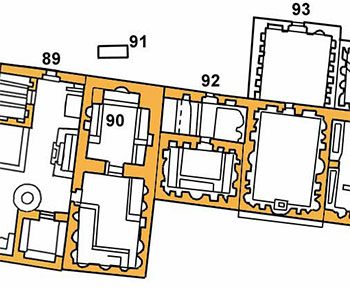 Tomb 90, like tomb 88 originally detached, was during the construction of the burial chamber immediately supplied with an enclosure. The entrance of the enclosure was on the north side. The façade was facing the Via Severiana. In front of the façade was a large U-shaped bench, similar to the benches of a triclinium.
Tomb 90, like tomb 88 originally detached, was during the construction of the burial chamber immediately supplied with an enclosure. The entrance of the enclosure was on the north side. The façade was facing the Via Severiana. In front of the façade was a large U-shaped bench, similar to the benches of a triclinium.
The façade has an aedicula in the middle with two columns supporting a semicircular tympanum. Between those columns we can see the place where once an inscription was attached.
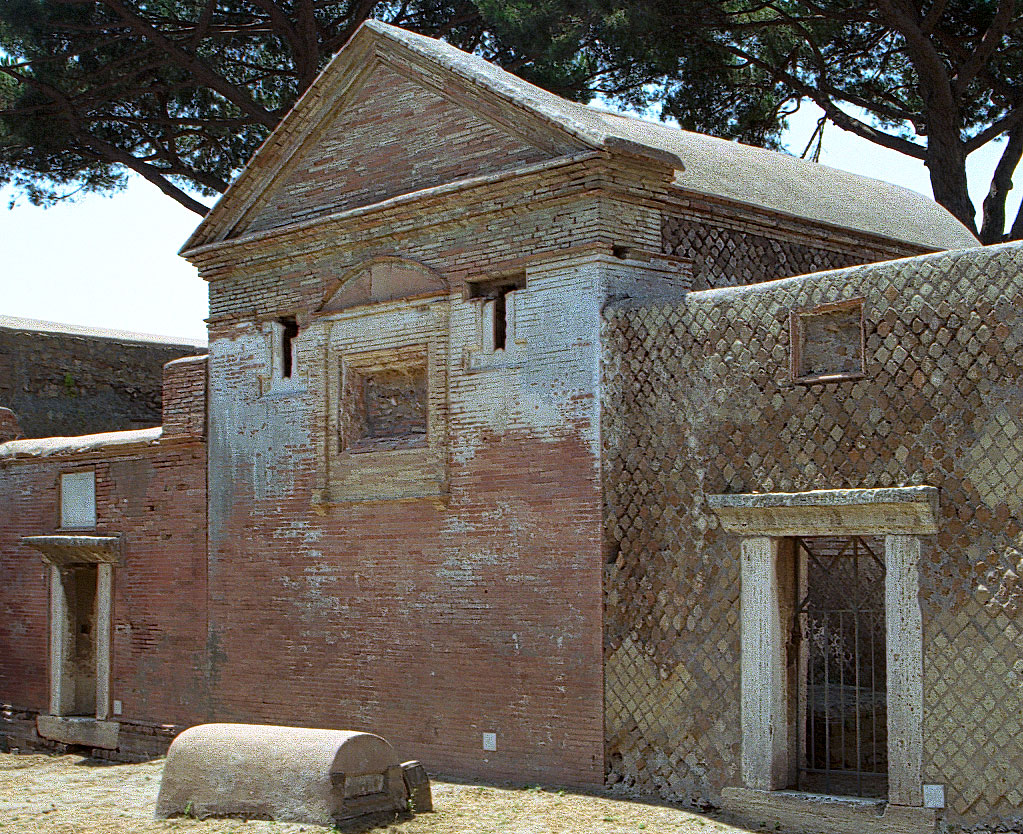
D(is) M(anibus)
P(ubli) GABINI ANNIANI
P(ublius) GABINIVS LONGINVS
ET ANNIA EPICTESIS
FECERVNT FILIO PIISSIMO
VIXIT ANNIS XVI
Publius Gabinius Longinus and Annia Epictesis have built this monument for Publius Gabinius Annianus, their most pious son, who lived sixteen years.
The deceased is also commemorated in the burial chamber by his sister. On a small marble memorial tablet (now in the Ostian depot) she wrote:
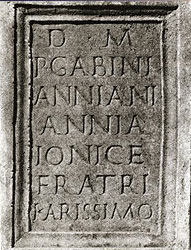 D(is) M(anibus)
D(is) M(anibus)
P(ubli) GABINI
ANNIANI
ANNI
IONICE
FRATRI
KARISSIMO
Annia Ionice for Publius Gabinius Annianus, her dearest brother.
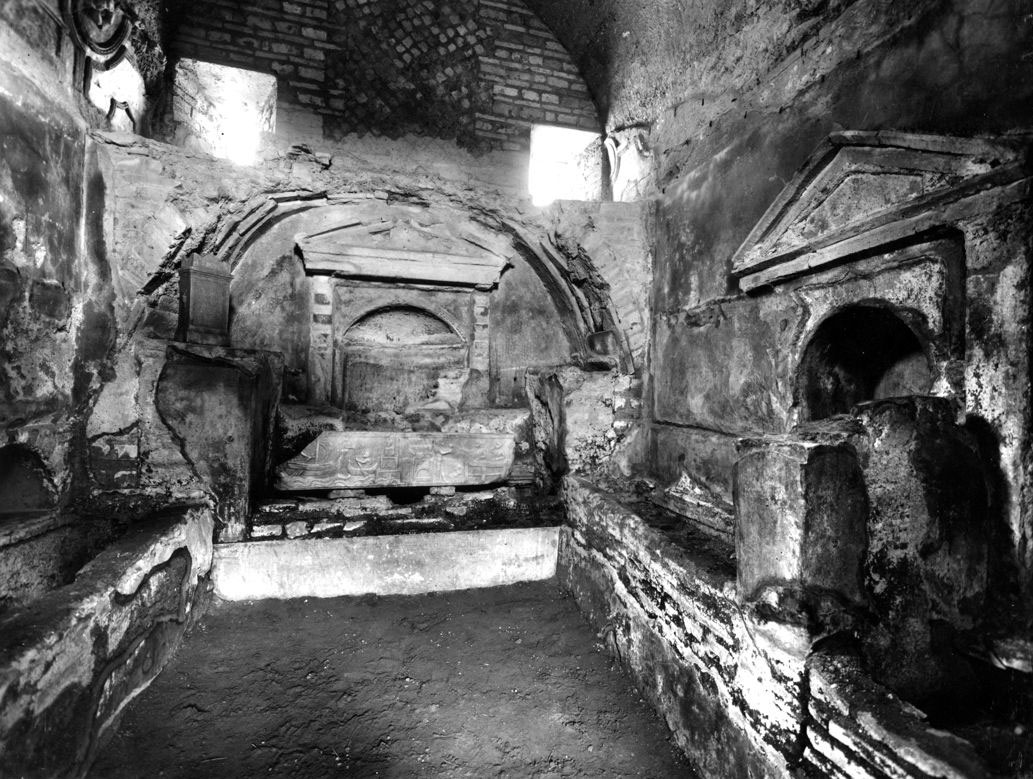
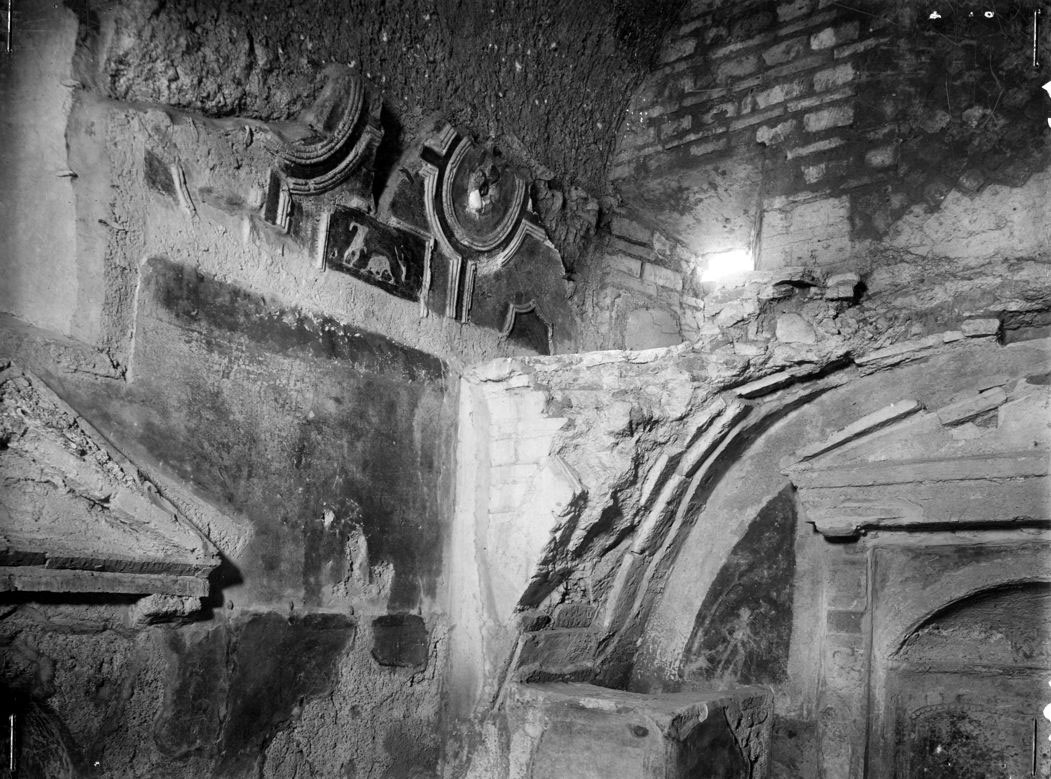
In the rectangular niches we see flying swans with flowers and ribbons in their beaks. In the tympanum of the aedicula to the right of the entrance a flying eagle is depicted.
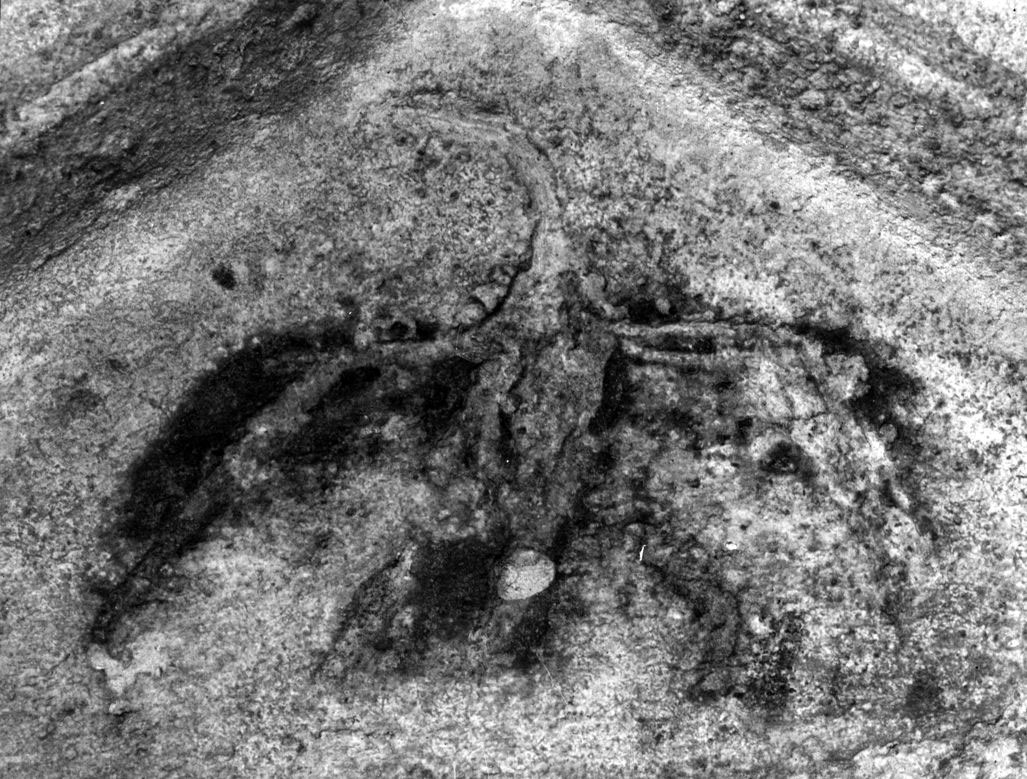
The ceiling too has painted scenes, including lion hunts. On the floor, made of white mosaic, were benches occupying the space beneath the niches alongside the left and back wall. These too were decorated.
Just like tomb 88, the entrance of the enclosure of tomb 90 comes out at the newly built tomb 89. The enclosure is, like the burial chamber, organized as a columbarium. In the niches are still traces of painted poppies.
The grave dates from 125-130 AD. In the back wall and entrance wall of the enclosure traces of reuse can be seen.
Next to the entrance is a marble slab of 19 x 26 cms with the following inscription:
DIS MAN(ibus)
T(iti) FLAVI AVG(usti) LIB(erti)
FELICIS CLAVDIA
DAPHINE CONIVGI
BENE MERENTI
ET T(itus) FLAVI(us) SEVERVS
PATRI FECERVNT
Claudia Daphine and Titus Flavius Severus have built this grave for Titus Flavius Felix, freedman of the Emperor. She for her well-deserving husband and he for his father.
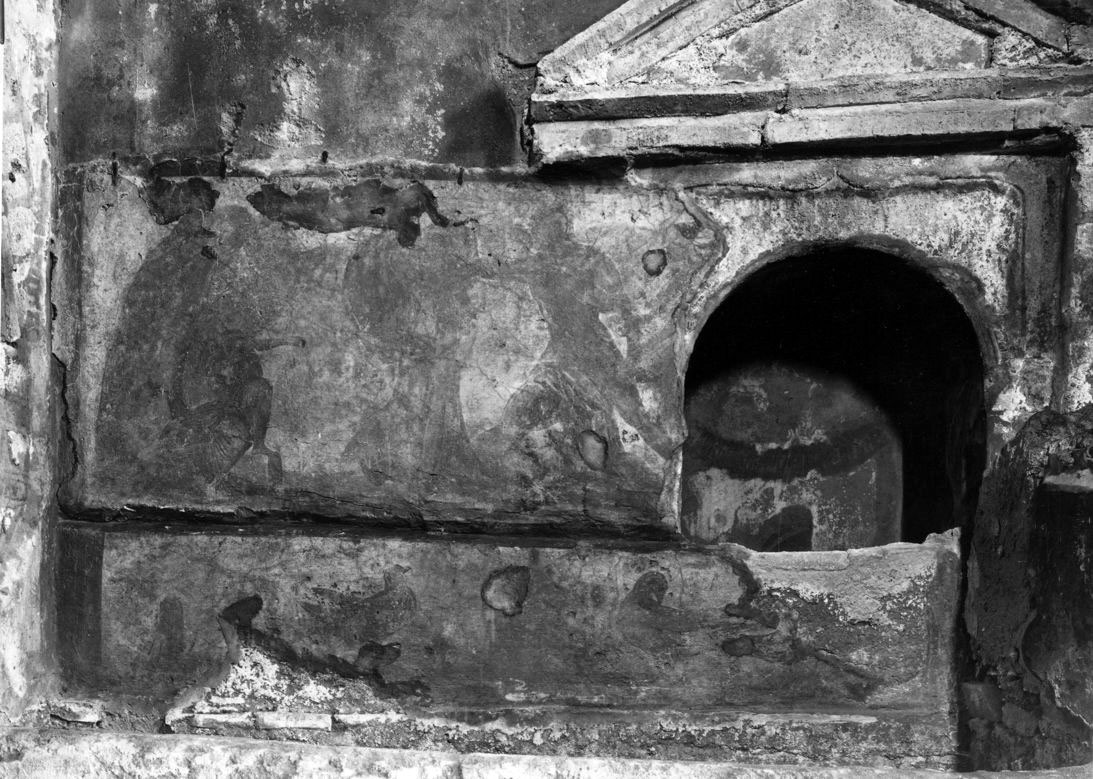
Formae, terracotta sarcophagi and amphorae have also been found in the enclosure, mixed at random. The burial chamber itself remained the same till the time of Antoninus Pius. After that time the burial chamber was changed completely by a new owner. Arcosolia appeared at floor level alongside the walls, whereby niches were closed. The walls were plastered again. The arch in the back wall was partly taken up by a sarcophagus with inscription:
D(is) M(anibus) L(ucius) CAECILIVS VICTOR DONATVM SIBI PAVIMENTVM
PVRVM VIRGIN(em) MONVMENTI HVIVS A PERELLA HIERONIDE
ET ANNIIS VITALE ET DECIA IN QVO SARCOPHAGA NOVA SVMPTIBVS SVIS
INST
QVE SIBI ET CAECILIAE HYGIAE CONIVGI SVAE ET LIBERTIS LIBERTABVSQVE POS
TERISQVE EORVM
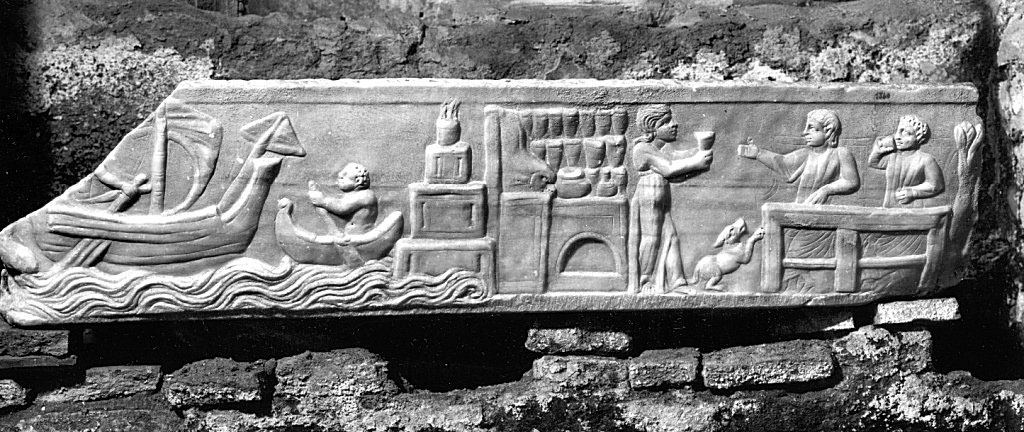
Above the inscription we find a relief depicting the lighthouse of Portus, a vessel entering the harbour and a tavern. The dating of the second period of use is estimated at 180 AD. From this period are probably also the decorations inside the arch of the back wall and on the side walls after the closing of the niches.
During the excavations a painting was seen of Narcissus on the left wall. On the right wall was the scene in which Hylas is led away by Nymphs.
- Sources
- Russel Meigs - Roman Ostia, At the Clarendon Press 1973
- Guido Calza - Necropoli nell'Isola Sacra'(1940)
- Dr. Jan Theo Bakker.
- Hilding Thylander - Inscriptions du port d'Ostie (Lund C W K Gleerup 1952).
- Ida Baldassarre, Irene Bragantini, Chiara Morselli and Franc Taglietti - Necropoli di Porto, Isola Sacra (Roma 1996).
Isola Sacra Index (D)
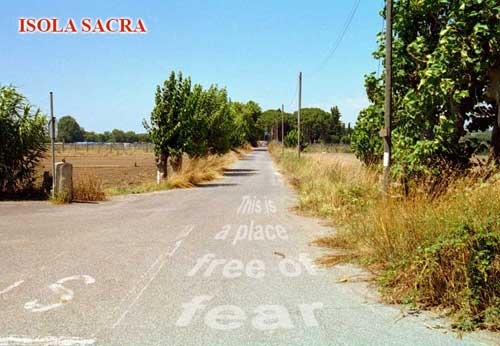
Speciale sectie over de Romeinse begraafplaats van Portus (Engels)....
Weiterlesen ...Leptiminus (Englisch))
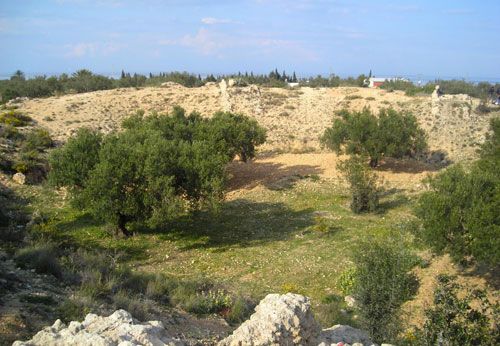
At the site of present-day Lamta on Tunisia's east coast, there was already a port city named Leptis Minor ....
Weiterlesen ...Römisches Seehandelsrecht (Englisch)

Roman law is the finest monument that Rome bequeathed to Western Europe....
Weiterlesen ...Sullecthum (Salakta) Englisch

In the Sahel, in the Tunisian province of Madhia, we find by the sea the small town of Salakta....
Weiterlesen ...Colonia Julia ad Turrem Libisonis (Englisch)

.....probably founded by Julius Ceasar around 46 BC, was located in the north-west of Sardinia.
Weiterlesen ...
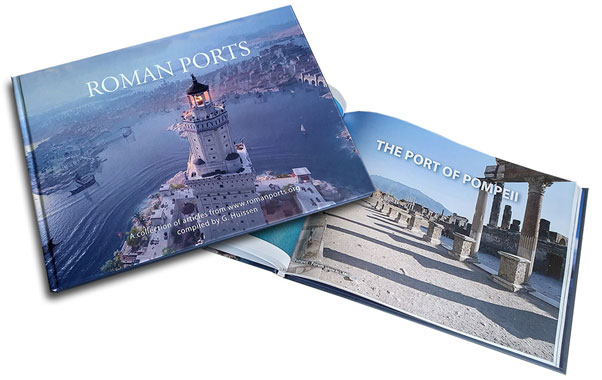
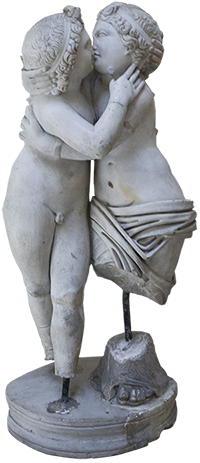 We are committed to providing versions of our articles and interviews in several languages, but our first language is English.
We are committed to providing versions of our articles and interviews in several languages, but our first language is English.